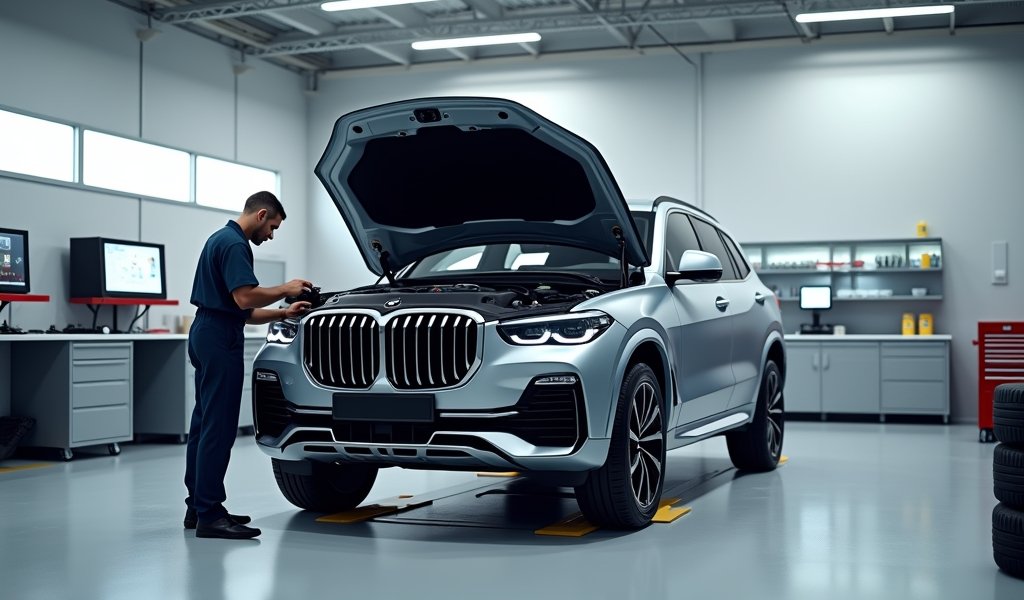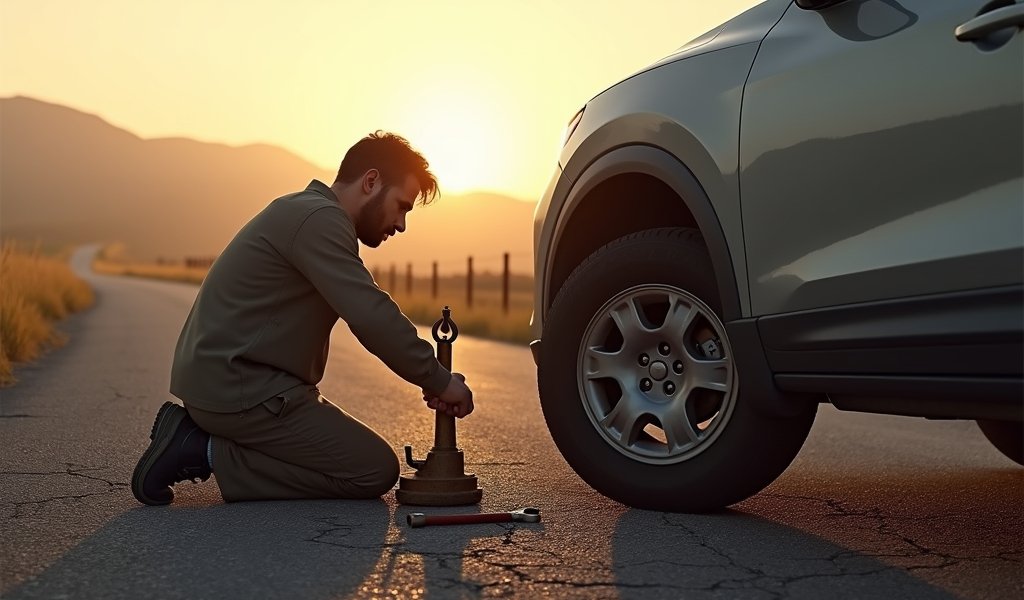Overview
This article provides a detailed guide for road trip vehicle maintenance, covering essential pre-trip checks for fluids, tires, battery, brakes, and climate systems, along with instructions for creating an emergency kit and performing maintenance during and after trips. Proper preparation prevents costly breakdowns, improves safety and fuel efficiency, and ultimately leads to more enjoyable travel experiences.
Table of Contents
- The Importance of Road Trip Car Maintenance
- Pre-Trip Essentials: What to Check Before You Go
- Fluid Checks: The Lifeblood of Your Vehicle
- Tire Maintenance: Where the Rubber Meets the Road
- Battery and Electrical System Checks
- Brake Inspection: Safety First
- Air Conditioning and Heating: Comfort on the Go
- Building Your Road Trip Emergency Kit
- During-Trip Maintenance Tips
- Post-Trip Checklist: Caring for Your Car After the Journey
- Conclusion
- Frequently Asked Questions
The Importance of Road Trip Car Maintenance
Planning a road trip car maintenance checklist is the unsung hero of any successful journey. As a mechanic with over 15 years of experience, I can’t stress enough how critical proper vehicle preparation is before hitting the open road. That peaceful mountain drive can quickly turn into a nightmare when your car breaks down miles from the nearest service station.
Think of your road trip maintenance as an insurance policy—one that costs a fraction of what emergency repairs might run you in unfamiliar territory. A well-maintained vehicle not only provides peace of mind but also ensures better fuel efficiency, safer driving conditions, and ultimately, a more enjoyable adventure.
The statistics speak for themselves: according to the American Automobile Association, they rescue over 30 million stranded motorists annually, with a significant spike during peak travel seasons. Many of these situations could have been prevented with basic preventive care. Let’s dive into the comprehensive road trip car maintenance checklist that will keep your wheels rolling smoothly, no matter how far you’re traveling.
Pre-Trip Essentials: What to Check Before You Go
The best time to start your road trip car maintenance checklist is about two weeks before departure. This timeframe gives you enough cushion to address any unexpected issues that might require parts ordering or additional service.
Start by reviewing your vehicle’s maintenance history. When was your last oil change? Is your car due for any scheduled maintenance? These records serve as your roadmap for what needs immediate attention. If you’re approaching or have exceeded any service intervals, now’s the time to schedule that maintenance service.
Next, perform a basic visual inspection. Walk around your vehicle looking for anything unusual—fluid leaks under the car, worn tire treads, cracked belts, or damaged hoses. Don’t ignore small issues; they have a way of becoming big problems when you’re hundreds of miles from home.
Schedule a professional inspection if you’re not comfortable performing checks yourself. According to AAA’s auto repair experts, a thorough pre-trip inspection can identify up to 80% of potential road trip failures before they happen. The $50-100 you might spend on this service can save you thousands in emergency repairs and lost vacation time.

Fluid Checks: The Lifeblood of Your Vehicle
Your vehicle runs on a complex system of fluids, each serving a critical function. A comprehensive road trip car maintenance checklist must include thorough fluid inspections. Think of these fluids as your car’s circulatory system—when they’re fresh and at proper levels, everything runs smoothly.
Engine oil deserves top priority. Check both the level and condition of your oil. If it appears dark and gritty or you’re within 1,000 miles of your next scheduled change, replace it before your trip. Fresh oil provides better engine protection during long drives, especially in hot summer conditions.
Don’t forget these other essential fluids:
- Transmission fluid: Should be pinkish and sweet-smelling, not brown or burning-scented
- Brake fluid: Must be at the proper level and replaced according to manufacturer recommendations
- Power steering fluid: Should be clean and at the correct level
- Coolant/antifreeze: Essential for preventing overheating, especially during summer road trips
- Windshield washer fluid: Fill completely before departure—you’ll use more than you expect
Pay special attention to your coolant if traveling through extreme temperatures. Desert conditions demand proper cooling system function, while winter journeys require adequate freeze protection. A simple coolant test can determine if your mixture provides appropriate protection for your destination’s climate.
Remember that fluid levels dropping significantly between checks may indicate leaks that need addressing before your journey. Proper fluid maintenance is perhaps the most cost-effective insurance against major mechanical failures during your adventure.
Tire Maintenance: Where the Rubber Meets the Road
Tires represent the single most important safety component on your road trip car maintenance checklist. They’re your vehicle’s only contact with the road, and their condition affects everything from handling to braking distance to fuel economy.
Begin with a thorough tread inspection. The penny test works well—insert a penny into your tire tread with Lincoln’s head pointing down. If you can see the top of Lincoln’s head, your tread depth is below 2/32 inch, and you need new tires before your trip. For longer journeys or winter driving, consider replacing tires when they reach 4/32 inch.
Check tire pressure when the tires are cold (before driving more than a mile). The recommended pressure is listed on a sticker inside your driver’s door jamb or in your owner’s manual—not on the tire itself. Proper inflation improves safety, extends tire life, and can improve fuel efficiency by up to 3% according to the U.S. Department of Energy.
Don’t forget to inspect your spare tire and ensure you have the proper tools to change a flat. On longer trips, consider these additional tire maintenance steps:
- Rotate tires if you’re within 2,000 miles of scheduled rotation
- Balance tires if you notice vibration at highway speeds
- Check wheel alignment if you notice pulling to one side
- Inspect valve stems for cracks or damage
A blowout at highway speed can be catastrophic. The small investment in proper tire maintenance before your road trip provides both safety and peace of mind that’s truly priceless. When completing your inspection checklist, pay extra attention to your tires—they’ll carry you safely to your destination and back.
Battery and Electrical System Checks
Battery failure ranks among the top reasons for roadside assistance calls, yet it’s one of the easiest issues to prevent with proper road trip car maintenance. Your vehicle’s electrical system becomes even more critical when traveling, powering everything from engine starting to GPS navigation to device charging.
Start with your battery. Most auto parts stores offer free battery testing. If your battery is over three years old, this check becomes especially important. Look for corrosion on terminals (a white or bluish powder) and clean it using a wire brush and a solution of baking soda and water.
Ensure all connections are tight and secure. A loose battery connection can cause intermittent electrical problems that are difficult to diagnose on the road. While checking the battery, inspect your alternator belt for cracks or fraying—it’s responsible for keeping your battery charged during driving.
Test all lights thoroughly before departure:
- Headlights (both low and high beams)
- Brake lights (have a friend help or use a reflection)
- Turn signals (front and rear)
- Hazard lights
- Interior lights (important for nighttime stops)
Replace any burned-out bulbs or fuses. Also check that your horn works properly—it’s a safety feature often forgotten until needed. Modern vehicles rely heavily on properly functioning electrical systems, and electrical failures can leave you stranded just as surely as mechanical ones.

Brake Inspection: Safety First
When it comes to your road trip car maintenance checklist, brake inspection should never be compromised. Your braking system stands between routine driving and potential disaster, especially when navigating unfamiliar mountain roads or unexpected highway situations.
Listen for warning signs: squealing, grinding, or pulsating sensations when braking. These symptoms indicate wear that should be addressed before departure. Check your brake fluid reservoir—low fluid can indicate worn brake pads or potential leaks in the system.
For the average driver, a professional brake inspection is worth the investment before a long trip. A qualified mechanic will measure brake pad thickness, inspect rotors for warping, check hydraulic components for leaks, and ensure proper performance. If your trip involves mountain driving, this inspection becomes even more critical.
If you’re comfortable doing basic inspections yourself, look through the wheel spokes to visually check brake pad thickness. Most brake pads have wear indicators—metal tabs that contact the rotor when pads are too thin. If you see less than 1/4 inch of pad material, replacement before your trip is recommended.
Consider your driving conditions as well. Will you be towing a trailer? Traversing mountain passes? Driving in heavy traffic? Each scenario places additional demands on your braking system. Being proactive about brake maintenance isn’t just about preventing inconvenient repairs—it’s about protecting everyone in your vehicle and others sharing the road.
Air Conditioning and Heating: Comfort on the Go
While not strictly mechanical necessities, properly functioning climate control systems prove essential to an enjoyable road trip. Your road trip car maintenance checklist should include thorough testing of both heating and air conditioning, regardless of season.
Run your air conditioning at maximum for several minutes. It should blow consistently cold air throughout the test. If performance seems weak or the air isn’t properly cold, you may need refrigerant recharging or have a component issue. An AC system that “works sometimes” will likely fail completely during your trip.
Similarly, test your heating system, even for summer trips. A properly functioning heater indicates good coolant flow through your engine, which helps prevent overheating. Plus, desert regions can experience dramatic temperature drops at night, making heat unexpectedly necessary.
Check all dashboard vents for proper airflow. Blockages reduce system efficiency and comfort. Also test all fan speeds—you want full functionality when conditions demand maximum heating or cooling.
Don’t forget to replace your cabin air filter before long journeys. This inexpensive part (usually $15-30) significantly improves air quality inside your vehicle and enhances HVAC system performance. Most filters can be changed in minutes with basic tools, though locations vary by vehicle make and model.
Climate control failures during extreme weather can transform your dream vacation into an uncomfortable ordeal. The small investment in preventive maintenance ensures everyone stays comfortable regardless of outside conditions.
Building Your Road Trip Emergency Kit
Even with the most thorough road trip car maintenance checklist, unforeseen circumstances can arise. A well-stocked emergency kit serves as your backup plan for situations beyond your control. As a mechanic who’s helped countless stranded motorists, I can attest to the value of proper preparation.
Start with the essentials that address common roadside issues:
- Jumper cables or portable jump starter
- Tire pressure gauge and portable air compressor
- Basic tool kit (screwdrivers, pliers, adjustable wrench)
- Flashlight with extra batteries
- Duct tape and WD-40 (surprisingly versatile fixes)
- Spare fuses appropriate for your vehicle
Add safety items that protect you during unexpected stops:
- Reflective warning triangles or flares
- High-visibility vests for roadside emergencies
- First aid kit with basic medications
- Fire extinguisher (small, automotive-rated)
- Multi-tool or pocket knife
- Rain poncho (changing a tire in the rain is miserable without one)
Include comfort and survival supplies for extended delays:
- Bottled water and non-perishable snacks
- Blanket or emergency thermal blanket
- Phone charger/power bank
- Paper maps (when cell service fails)
- Cash in small denominations
Customize your kit based on your route and conditions. Desert travel demands extra water, while winter journeys require additional warmth provisions. Store your emergency supplies in a dedicated container that stays in your vehicle, ensuring everything remains accessible when needed.
Remember, the best emergency kit is one you never need to use. But should trouble arise, you’ll be grateful for the forethought that went into preparing your car for a long road trip, including this emergency preparedness.
During-Trip Maintenance Tips
Your road trip car maintenance checklist doesn’t end when you pull out of the driveway. Regular checks during your journey help catch developing issues before they become trip-interrupting problems. Just five minutes of attention each morning can save hours of headache later.
Establish a quick daily inspection ritual. Before starting your day’s drive, walk around your vehicle looking for anything unusual—leaking fluids, low tires, or new damage. This habit spots problems early when they’re typically smaller and less expensive to address.
Keep an eye on your dashboard indicators. Modern vehicles have sophisticated monitoring systems that detect issues before they become obvious to drivers. Never ignore warning lights—consult your owner’s manual to understand their meaning and urgency.
Monitor your vehicle’s behavior while driving. Unusual noises, vibrations, or handling changes warrant investigation at your next stop. Trust your instincts—if something feels “off,” it likely is. Most major mechanical failures announce themselves with subtle warnings before catastrophic breakdown.
During fuel stops, clean your windshield thoroughly and check fluid levels if you’ve traveled more than 1,000 miles. In extreme temperatures or challenging driving conditions, more frequent checks become necessary.
Give your vehicle appropriate rest periods. Continuous driving, especially in extreme conditions, puts tremendous strain on all systems. Allow your engine to cool during breaks, particularly if you’ve been driving in hot weather or mountainous terrain.
Remember that preventive maintenance costs significantly less than emergency repairs. The slight inconvenience of regular checks provides insurance against major disruptions to your travel plans.
Post-Trip Checklist: Caring for Your Car After the Journey
A complete road trip car maintenance checklist includes post-trip care. Long journeys put extra stress on your vehicle’s systems, and addressing any issues promptly prevents them from worsening before your next adventure.
Start with a thorough cleaning, inside and out. Road grime contains corrosive elements that damage your vehicle’s finish over time. Pay special attention to the undercarriage if you’ve driven through salted roads or beach areas. The interior deserves equal attention—food particles and spills can cause permanent damage if left unaddressed.
Check fluid levels again, looking for significant changes from your pre-trip inspection. Major decreases might indicate developing leaks that require attention. Pay particular attention to engine oil level after long trips, as some consumption is normal during extended driving.
Inspect tires for unusual wear patterns that might have developed during your journey. Uneven wear often indicates alignment issues exacerbated by long-distance driving. Address these promptly to extend tire life and maintain optimal handling.
If you’ve accumulated significant mileage during your trip, consider whether you’re approaching regular maintenance intervals. Long journeys can push you into the next service window faster than expected. Staying current with manufacturer-recommended maintenance preserves both reliability and resale value.
Document any concerns that arose during your journey. Note unusual noises, performance issues, or warning lights for discussion with your mechanic. Even if these problems seemed to resolve themselves, they may indicate developing issues best addressed proactively.
Consider your post-trip maintenance as preparation for your next adventure. The attention you give your vehicle now directly affects its reliability for future journeys.
Conclusion
A comprehensive road trip car maintenance checklist serves as your blueprint for trouble-free travel. By methodically addressing each system before departure, monitoring your vehicle during the journey, and performing proper post-trip care, you maximize both safety and enjoyment while minimizing the risk of costly interruptions.
Remember that preventive maintenance always costs less than emergency repairs, both financially and in terms of disrupted plans. The peace of mind that comes from knowing your vehicle has been properly prepared allows you to focus on what matters—the experiences and memories you’re creating along the way.
Whether you’re planning a weekend getaway or cross-country adventure, your road trip success begins with mechanical preparation. Take the time to work through this road trip car maintenance checklist, addressing each item thoroughly. Your future self, cruising confidently down the open road, will thank you for the effort.
Frequently Asked Questions
How long before a road trip should I start preparing my car?
Ideally, begin your road trip car maintenance checklist 2-3 weeks before departure. This provides adequate time to address any unexpected issues that might require parts ordering or additional service.
Is it worth getting a professional inspection before a long trip?
Absolutely, especially if you’re not mechanically inclined or your trip exceeds 1,000 miles. Professional inspections typically cost $50-100 but can identify potential failures before they strand you far from home.
What fluids should I check before a road trip?
Check engine oil, transmission fluid, brake fluid, power steering fluid, coolant/antifreeze, and windshield washer fluid. Proper fluid levels and condition are essential for reliable operation during extended driving.
How do I know if my tires are safe for a long journey?
Inspect tread depth (should be at least 4/32″ for long trips), check for uneven wear patterns, and ensure proper inflation according to your vehicle’s specifications. Also verify your spare tire is in good condition and properly inflated.
What’s the most common cause of road trip breakdowns?
Battery failures, tire problems, and cooling system issues top the list of common road trip breakdowns. These three systems deserve special attention on your road trip car maintenance checklist.


Pingback: Best Gas Price Apps for Road Trips Top 5 - knowsyourcar.com